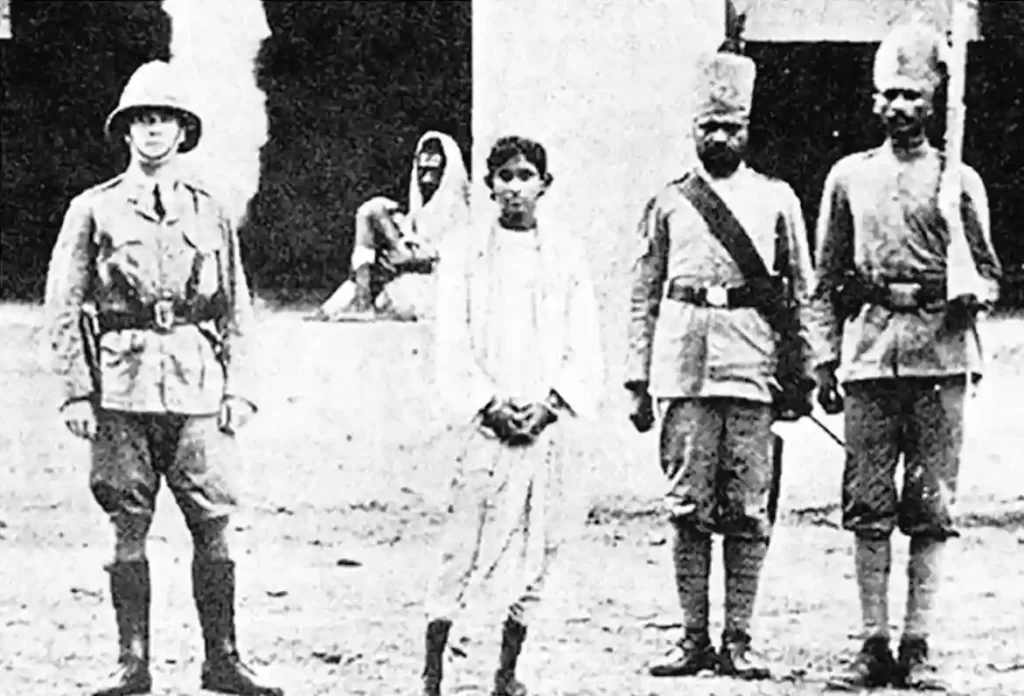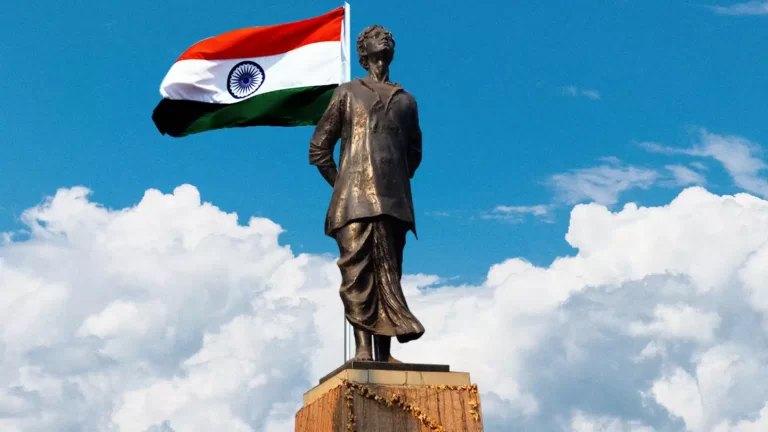A Brief Story of Khudiram Bose
The Story of Khudiram Bose is one of the most inspiring stories of courage and sacrifice that I have ever read or heard. In order to fight against British Rule in India, Khudiram Bose sacrificed his life at the age of just 18 when he was hanged to death in 1908. One of the interesting facts about him was that his mother was only 13 years old when she gave birth to him, and he never knew who his father was because his mother died shortly after his birth.
Who was Khudiram Bose?

Khudiram Bose was an Indian freedom fighter who at the age of 18 assassinated Ashe, the then secretary of state for India and Burma, who was responsible for the Jallianwala Bagh massacre. In his act of bravery, Khudiram was joined by his elder brother Ramdas who was later arrested and hanged to death. So how did this all happen? Read on to find out more about the story of Khudiram Bose, one of the youngest Indian freedom fighters who did not hesitate to sacrifice his life for the greater good of our country.
Khudiram, a young freedom fighter and Indian nationalist, has been a topic of much interest to historians since his execution by British authorities in 1908. To most Indians today, Khudiram is hardly more than a footnote in history books and public memory. Born into an upper-middle class family, Khudiram was a revolutionary prodigy. His father was dead set against Khudiram’s involvement with India’s anti-colonial struggle. However, he was closely mentored by one of India’s early freedom fighters, Benoy Basu (or Bhupendra Nath Dutta), who adopted him as his son and taught him how to use explosives for revolutionary purposes. With these skills, Khudiram would go on to plant two bombs in a garden outside of Eden Gardens during a massive political rally being held by Britain’s Viceroy Lord Minto. The first bomb failed to detonate and alerted police officials before it could harm anyone.
Did you know that Khudiram Boss is only 18 years old?
The story of Khudiram Bose sounds like something straight out of a film script, but it’s all too real. Born in 1895 in East Bengal (now Bangladesh), Khudiram came from humble beginnings, with his parents working as farm laborers and belonging to the lowest rung of Indian society at the time – the untouchables.
History seems to have forgotten that one of India’s first freedom fighters was an 18-year-old boy named Khudiram Bose. When asked if he would be involved in overthrowing British rule in India, he had famously responded Even if it means I have to drink poison or leap into fire or cannon mouth, I will do it. But did you know that he actually was forced to drink poison? The British had found out about his revolutionary plans and asked him to prove his patriotism by drinking poison.
He drank without hesitation, but instead of dying like they expected, he ended up surviving for over a month with no food or water. In fact, even after finally succumbing to death from starvation, he didn’t die alone; all around him were people who were also dying from starvation as part of their hunger strike against colonial rule. He is still remembered today as one of India’s greatest freedom fighters.
Did you know he was executed in Dhaka Jail on August 11th, 1908?
The Dhaka Jail holds a special place in history because it was on 11th August 1908, that freedom fighter, nationalist, revolutionary and patriot Khudiram Bose was executed here by hanging. He was hanged till death for his participation in an attempt to kill British Magistrate Kingsford while he was on his way to Dhaka from Chandpur with a bodyguard of 4 European officers at 11 pm on 27th April 1908. After being informed of possible trouble during Mr Kingsford’s visit, Lieutenant Simpson and three other European Officers had gone ahead with Mr Kingsford and his sons and left East Bengal CID Inspector Havelock Wilson and Mr Escombe (Sub-divisional Officer) behind at Chandpur.
Did you know his family claimed him dead and went into hiding for 3 months after his execution?
In many ways, his life was short. But just three months after his execution, his family was forced to go into hiding after they had been threatened with physical harm and even death. In fear of their lives, they hid in several places across India for three months before escaping on a ship to France. While there is little documentation of what happened to them or where they went next, it’s believed that at least one of Khudiram’s siblings continued fighting for independence from France and Britain in Syria as well as Egypt before returning home. Unfortunately for them, however, by then India had gained its independence. At least one of his brothers returned to India where he worked as a politician in Kolkata and became an instrumental figure in local politics.
Khudiram Bose Early Life, Birth, Education and Family
He was born on 23 May 1887 in Nator, West Bengal (present-day Nadia District). He was born to Indubhusan Bose and his wife, Prabhabati Devi. His father, a magistrate at that time, had great ambitions for Khudiram and sent him to Kolkata’s Hare School. While there, he spent most of his time in reading various books and newspapers, but it is said that he scored an average grade of 2.5 out of a total 5 score in all courses except mathematics where he managed 4.5 out of 5. Though expected to become a doctor by his father after passing high school, Bose lost interest in studies much earlier than expected and was expelled from school shortly thereafter due to poor performance in chemistry.
Revolutionary Activities
In 1907, Pulin Behari Das and Satyendranath Basu visited Netaji at his house in Shimla. It was during these meetings that he decided to carry out revolutionary activities in order to liberate India from British rule. On 18 December 1910, Prithviraj C. Das, along with Taraknath Das and Aurobindo Ghosh planned an attempt on James Stuart, Lieutenant Governor of Bengal. However they failed to assassinate him because of a late arrival at Muzaffarpur station where they were to ambush him.
Incidents leading to Arrest of Khudiram Bose

Khudiram and Prafullanath were arrested on 10th August 1908 at Hijli, where Prafullanath had gone to look for a plot of land. The police party reached there at 3 o’clock in the afternoon and set up camp near Hijli police station. Superintendent of Police Kerr, who was accompanied by Sub-Inspector Johnson, Inspector Jones and Head Constable Brown, reached Brahmanbaria that night and then went to Pabna where they came to know that Prafullanath was visiting his friends in Nashipur village. The policemen rushed there and arrested both Khudiram and Prafullanath from Tamluk Court road.
The court room drama<This part should talk about -: There were several rounds of cross-questioning by defense lawyer Brajendra Kishore Chakraborty and prosecution lawyers Brajamohan Mitra and Hem Chandra Naskar. A day before he died, Khudiram made an impassioned speech against British rule and their exploitation of Indians in general, which left everyone deeply moved. This speech has been taken down verbatim in Bengali script with my own eyesight, says eyewitness Prasanna Kumar Sen in a letter written to Ghosh’s family members from prison. He asked me whether I would take it back with me after he is dead?
Muzaffarpur Bombing
Khudiram Bose, with the help of Prafulla Chaki, murdered the District Judge of Muzaffarpur, Bihar. Preparing for the bombing, Khudiram noted the magistrate’s routines, including the frequency and timings of his morning court, and evening rounds of his club. Khudiram waited for Kingsford’s carriage on the 30th of April 1908, outside the European Club. The moment he saw the carriage, he didn’t hesitate to act and threw the bomb at it. It blew up, killing the passengers. Unfortunate to say, the carriage was not occupied by Kingsford but by Pringle Kennedy’s wife and daughter. Khudiram and Prafulla Chaki made their escape separately.
The Story of Khudiram Bose tells the tale of the youngest Indian freedom fighter, who died at the age of 18 in 1911 after bombing the Viceroy’s coach to stop the partition of Bengal province by the British government.
Dr. Prafulla Chaki, who also managed to escape, was caught by the police and decided to shoot himself before they could capture him. The British judge, in this case, ruled for the death penalty for the defendant. The defense argued that there may be others capable of the planned attacks and that his age, at this time, should be taken into consideration. On the 11th of August, the sentence was carried out.
The whole of Calcutta rose up in protest of Khudiram’s execution. After the release of the martyr’s body from prison, the funeral procession witnessed by thousands, who lined the streets with flowers and garlands. One of the major newspapers at the time, The Amrit Bazaar Patrika, reported Khudiram’s last words: Smiling. Despite being one of India’s youngest revolutionary leaders to have sacrificed his life for the cause of freedom, Khudiram Bose is relatively unknown to people today.
Khudiram Bose Death
Khudiram was an Indian freedom fighter who was the youngest in all his village and became involved in India’s first war for independence at a very young age. Born in 1897, he was 16 when he joined his cousin, Gyanesh Chandra Chattopadhyay, to throw two bombs at a carriage carrying Kingsford – Caldwell. Khudiram did not want to kill anyone but wanted to act as a warning signal to stop them from interfering with Indians struggles for independence. Khudiram is known as Sahid Khudiram- which means ‘witness’ or ‘guarantor’. He never got his chance to testify about what had happened and on 27 April 1908, aged 18, he was hanged for his actions. Khudiram Bose death place is Kolkata.
Next Article : Bose the Forgotten Hero – The Founder of Azad Hind Fauj
